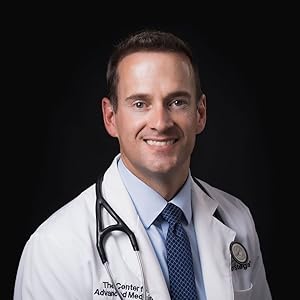
Mark Lintern
关于作者
From an inquisitive mind in 2014 to the creation of a new theory of cancer in 2023, justifying a new treatment approach: In 2014, I embarked on a profound journey into the realm of cancer. It was fuelled by personal experiences—a diagnosis of skin cancer and the devastating loss of a dear friend to cervical cancer. Determined to uncover the underlying DNA genes responsible for my own diagnosis with a view to preventing the disease from returning, I soon realised that the enigmatic origins of cancer remained shrouded in mystery. Existing theories, numerous as they were, stood unproven and inconclusive. This realization compelled me to redirect my focus towards seeking connections associated with cancer’s origin, in the hope of unravelling its profound complexities. Over the following 8 years I delved deep into cancer theory research gaining an understanding of many of the different theories available. I conversed with Professor Thomas Seyfried who provided guidance on how to approach the subject, in particular, highlighting the importance of explaining the 10 Hanahan and Weinberg hallmarks – the yardstick by which the accuracy of all cancer theories are measured. I became a sponge for health-related information, with many a day and night studying data from the scientific literature, often till the early hours of the morning. It became apparent that cancer had a metabolic origin as opposed to a genetic origin, with random DNA mutations appearing to be symptoms. But with there also being contention over aspects of the metabolic theory, namely the cause of the Warburg effect – I realised that identifying the cause of this abnormal metabolic state was pivotal to explaining cancer’s driving mechanism, because the Warburg effect appears to drive most of the other conditions of cancer. In 2017 I experienced a lightbulb moment that was to lead to the identification of a specific and unique driving mechanism not yet considered by scientists. An immunological paper mentioned that certain infections trigger a Warburg-like effect, which is an anti-infection response; thus providing an explanation for this critical hallmark. The ‘cell suppression’ mechanism of cancer was born. I went on to develop the theory, becoming the first to explain all 10 hallmarks and at least 20 additional cancer-related factors that remain unexplained by mainstream theories. Why is this important to know? It is only once the driving mechanism(s) have been successfully identified, that an effective treatment can be realised. By 2023 I was ready to have my theory challenged by leading scientists to see if it could withstand scientific scrutiny. With the help of the cancer charity Yes to Life, we took part in a live online debate, where a panel of 10 cancer experts (4 scientists, 3 clinicians, 3 patient experts) and an audience of over 200 medical professionals, convened to critically analyse my model of cancer and the research I’d amassed. Three presentations and some gruelling questioning later, the majority of medical professionals voted to acknowledge that I’d written a comprehensive theory worthy of further investigation – my 8 long years of research and theory development had been validated. Knowing that treatment success is defined by the accuracy of the cancer theory that underpins it, I documented my findings in a book titled 'The Cancer Resolution?' to support an additional treatment approach to cancer that has the potential to effectively treat the disease. With this in mind, the book has been crafted for the general public, bringing the latest science on cancer - it's origin and new options for treatment - into the public domain. My aspiration is that this work will foster a deeper understanding of the disease, allowing cancer patients to make more informed decisions about the treatment options available to them; with emphasis on an additional approach that has the potential to vastly improve patient survival. You can find out more about me on my website www.cellsuppression.com
阅读完整简历















